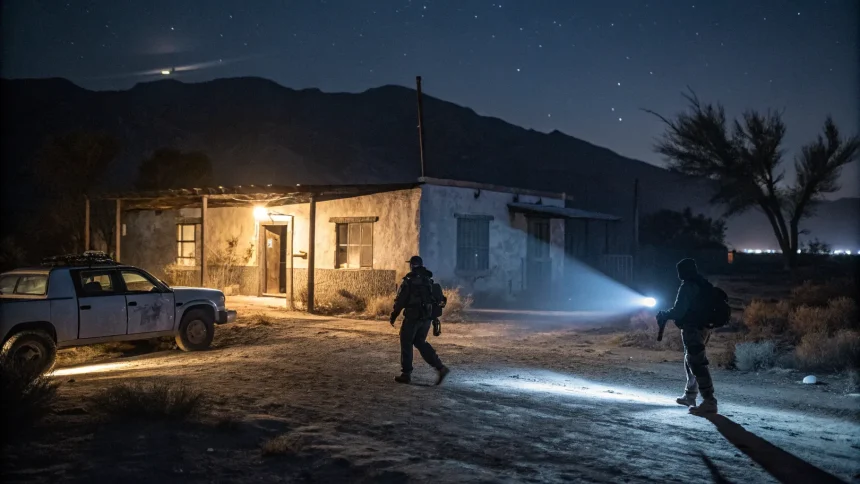A recent federal case in Washington signals a sharper approach to Mexican drug cartels, with U.S. officials applying counterterrorism policy in new ways to fight fentanyl networks and cartel violence. The move, described by legal observers as a strategic shift, arrives as overdose deaths remain high and cross-border crime adapts to pressure.
At issue is how far national security tools—long aimed at extremist groups—can be used against criminal organizations that rely on terror-like tactics. The timing matters, as policymakers seek faster results while managing a delicate relationship with Mexico.
The case underscores Washington’s intensified targeting of Mexican cartels and marks an expansion in the way U.S. counterterrorism policy is applied.
A shift in strategy
For years, the government relied on drug and money-laundering statutes, extraditions, and sanctions under the Kingpin Act to pursue cartel leaders. Officials have now opened the door to using more national security authorities in select cases. That could include intelligence-driven investigations, terrorism-linked enhancements at sentencing, and broader financial restrictions on facilitators.
The approach reflects frustration with cartel resilience and the evolving fentanyl supply chain. Synthetic opioids are cheap to produce and easy to move, which makes traditional interdiction less effective on its own.
Public health pressure and policy momentum
Overdose deaths remain above 100,000 per year, driven largely by fentanyl. Treatment access, naloxone distribution, and testing strips have expanded, but the supply remains steady. Policymakers face demands for both prevention and tougher enforcement.
Linking cartel action to national security may unlock more resources and speed. It may also signal to overseas suppliers and financial intermediaries that the costs of doing business have risen.
Legal questions and civil liberties concerns
Applying counterterrorism tools to criminal syndicates raises legal and ethical questions. Defense attorneys warn about overbroad surveillance and the risk of mission creep. Human rights advocates worry that labels and tactics designed for wartime contexts could chill speech or entangle people with limited roles in the trade.
Prosecutors argue that cartels use intimidation, mass killings, and coercion that resemble tactics long associated with terrorism. They add that sharper tools are necessary when violence spills into communities and across borders.
- Supporters: say expanded tools deter financiers, brokers, and chemical suppliers.
- Critics: warn of due process risks and pressure on diplomatic ties with Mexico.
- Neutral analysts: call for narrow, clearly defined use and strong oversight.
Cross-border diplomacy and Mexico’s role
Any change in U.S. posture affects cooperation with Mexico. Joint investigations, extraditions, and shared intelligence are essential to dismantling supply chains. Mexican officials often resist labels that blur lines between crime and terrorism, citing sovereignty and the risk of escalation on their soil.
Analysts say progress depends on keeping channels open: targeting high-value nodes, tracing precursor chemicals, and tracking money. A unilateral approach could strain partnerships that have delivered key arrests.
What changes on the ground
The practical impact may emerge first in finance and logistics. Banks, crypto platforms, and shipping companies could see tighter screening as cases align with national security standards. Procurement fronts and chemical brokers may face more aggressive designations and asset freezes.
On the streets, interdiction alone is unlikely to change overdose trends. Public health experts stress that supply-side pressure must pair with treatment, medication-assisted therapy, housing support, and jobs programs to reduce demand and harm.
Signals to watch
Observers will look for test cases that clarify boundaries. Court rulings may define when counterterrorism enhancements apply to cartel conduct. Treasury designations and joint task force announcements could reveal priorities, including whether facilitators in third countries face new penalties.
Congress may also weigh in. Some lawmakers have pushed for formal terrorist designations for cartels, while others prefer targeted tools without broad labels. Oversight hearings and reporting requirements could shape how far this strategy goes.
The immediate takeaway is that national security and criminal enforcement are converging in select cartel cases. The goal is disruption of supply chains and financiers, not only the arrest of visible leaders. Success will hinge on clear rules, judicial review, and steady cooperation with Mexico, while expanding treatment and harm-reduction at home.
The case marks a new phase in a long fight. Expect more scrutiny of how these tools are used, whether they reduce overdose deaths, and how they affect a complex partnership across the border.







